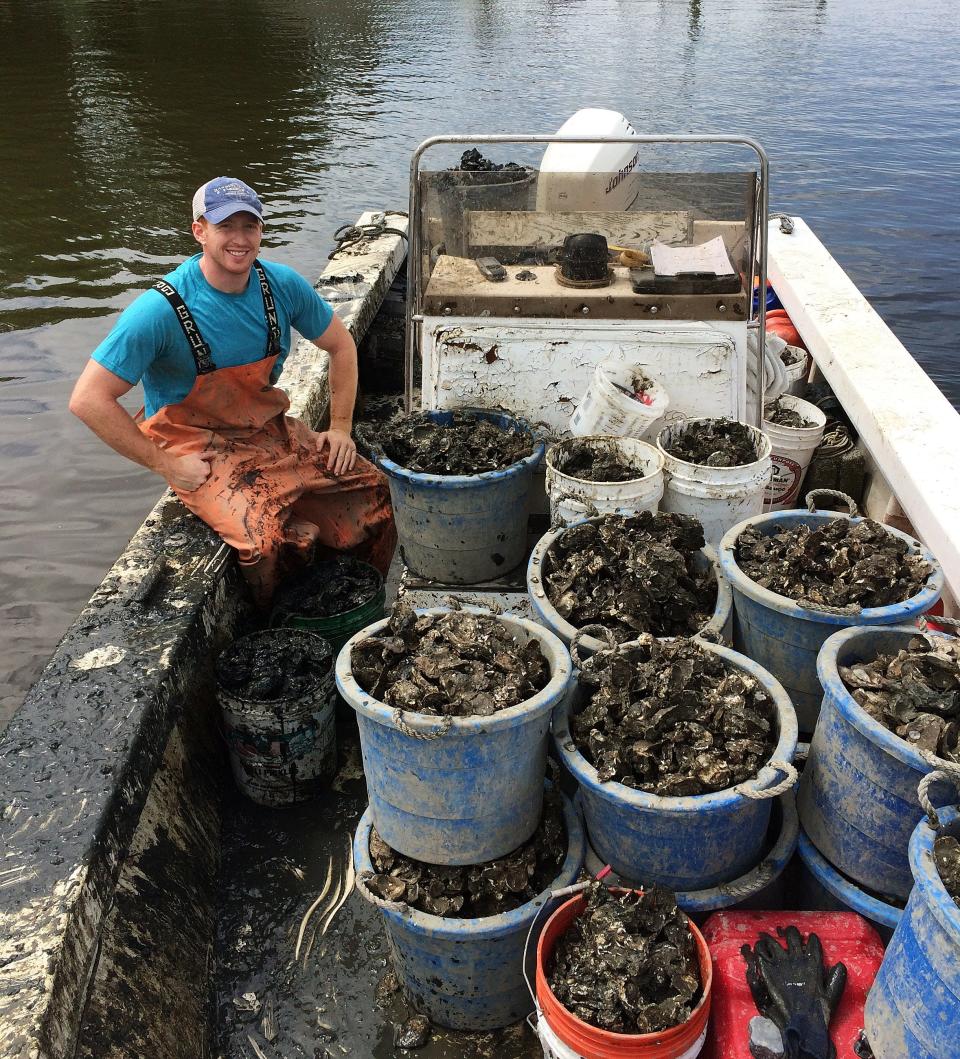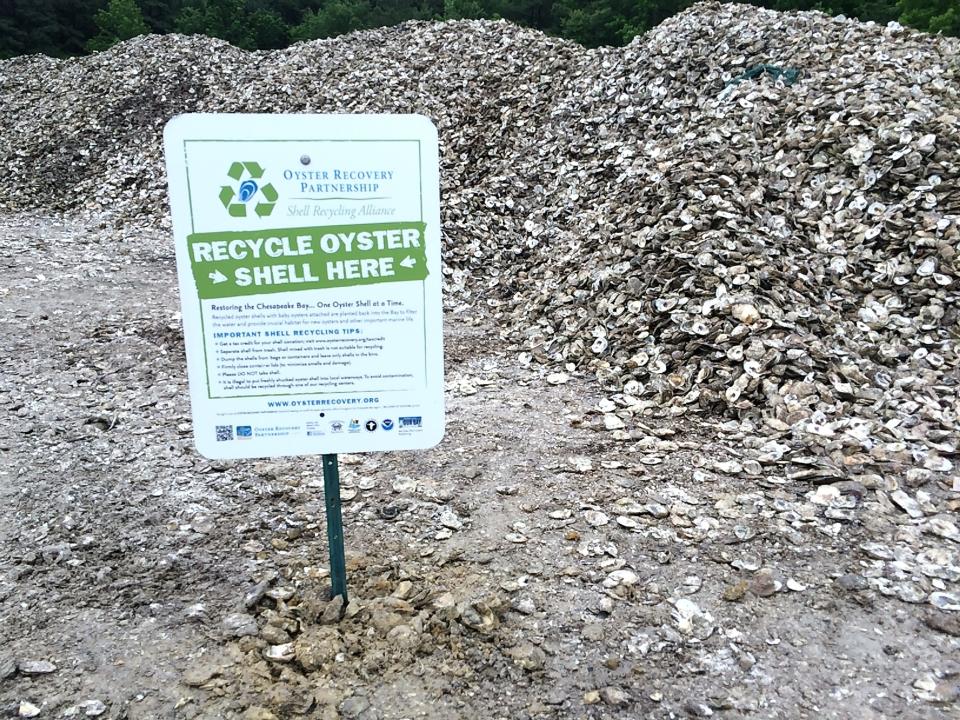'Chesapeake Bay belongs to everyone': How Maryland is taking lead to protect it
On Thursday, Gov. Wes Moore continued Bay restoration efforts after being unanimously elected to serve as chair of the Chesapeake Executive Council.
It took place during a bipartisan meeting hosted by the Environmental Protection Agency in Washington, D.C., and the council serves as the primary policy and leadership body of the formal Chesapeake Bay Partnership’s effort to restore the Chesapeake Bay. It's comprised of the nine signatories to the 2014 Chesapeake Bay Watershed Agreement.
“The Chesapeake Bay belongs to everyone. It is a place of inspiration, source of economic strength, and a keystone of our environmental health,” said Moore. “We will grow our coalition and hold each other accountable for improving the health of the Bay. I believe in the power of partnership and if we follow the science, we can achieve our vision of a cleaner, greener, healthier Bay for all.”
The 40th anniversary of the original Chesapeake Bay Agreement was marked this year
State agencies are pursuing more comprehensive restoration projects and partnering with community organizations to identify ways to improve shallow-water habitats to benefit fish and crabs and protect communities from flooding.
To accelerate progress toward the 2025 goals, Maryland is increasing outreach and technical assistance to farmers to reduce polluted runoff from agriculture and planting 5 million new trees. In the Bay, Maryland planted a record 1.7 billion water-filtering oysters this year and is working to finish a fifth large-scale oyster restoration project in the Manokin River Sanctuary.
More on oyster health Oyster restoration efforts at new heights on Chesapeake Bay, with these groups leading way
A possible oyster boom to come in Chesapeake Bay?

In July, Gov, Moore announced a major policy shift in how Maryland will deploy state resources to improve water quality in local streams, the Chesapeake Bay, and the Atlantic Coastal Bays.
Moore signed two executive orders and outlined plans to provide more places for people to safely swim, better protect coastal areas from climate change, and increase fish and crab populations to improve economic opportunities for watermen and the state’s seafood industries.
Last Tuesday, the Moore administration announced that more than 1.7 billion new juvenile oysters have been planted on sanctuary and public oyster fishery sites in Maryland’s Chesapeake Bay this year, surpassing an ambitious 2023 planting goal and setting a new annual record.
"Planting 1.7 billion oysters this year shows the success of the broad partnership of watermen, scientists, academics, nonprofits, and state and federal government officials dedicated to this vital natural resource and economic driver for Maryland,” Moore said.
The milestone means that the state has planted almost 7 billion oysters since launching its large-scale oyster restoration strategy in 2014 with the help of numerous partners.
Oysters are beneficial because they filter excess nutrient pollutants from the bay, provide valuable habitat for other marine species, and boost the state’s commercial seafood industry through annual harvests and oyster aquaculture.
More on oysters rebounding Oyster harvest rebounds in Bay and its waters, and here's what's driving recovery
“In recent years, we’ve seen several good natural spat sets for oysters, which have boosted the bivalves’ overall population as well as economic returns for harvesters and growers,” said Josh Kurtz, Maryland Department of Natural Resources Secretary. “Oyster planting efforts have enabled us to work toward a broader goal to increase the species’ population in Maryland for their ecological benefits.”
For initiatives like the Oyster Recovery Partnership, these efforts are a sign of healthy yield to follow in years to come.
”It took three decades to plant 10 billion oysters in Maryland, and half of that was completed in the last decade,” said Oyster Recovery Partnership Executive Director Ward Slacum. “To achieve meaningful results for the Chesapeake Bay, we must be unyielding, and this year’s planting rate is a positive sign that Maryland is committed to Bay restoration.”
Oyster stock rebound opens new areas to harvesting

On Sunday, the secretary of the Maryland Department of Natural Resources was set to announce that the Chesapeake Bay and its tidal tributaries north of the northernmost span of the Gov. William Preston Lane Jr. Memorial Bridge are open to all allowable harvest bottoms, with the exception of some closures.
The notice supersedes all others effective prior to Oct. 16, 2023, affecting oyster harvest areas north of the northernmost spans of the Gov. William Preston Lane Jr. Memorial and the R. Clayton Mitchell Jr. (Kent Narrows) bridges.
According to the department, this opening is due to the results of the 2023 oyster stock assessment results. The Swan Point Dredge Area was requested to remain closed by the county oyster committees while there are ongoing spat-on-shell plantings.
The lower Chester River was closed due to the 2023 oyster stock assessment results. The remainder of the Chester River has been closed at the request of the Kent and Queen Anne’s County Oyster Committees to protect spat-on-shell plantings until they reach market size.
More on oyster recipes Explore Salisbury's foodie scene with new Heart of Savory Salisbury Foodie Tour
This article originally appeared on Salisbury Daily Times: Oysters rebound as Maryland gets lead Chesapeake Bay protection role

